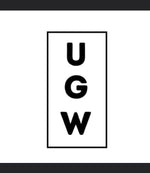
Knowing your soil structure is important so that you know what to plant where! Plants have different preferences and understanding your soil structure will help you determine how to meet a plant’s needs. When you are testing your soil structure, you are not looking at the organic matter component of your soil. What you are observing is the particle size of the parent material that your soil is made out of–sand, silt or clay (and other variants). Of course adding organic matter to any soil will increase nutrient exchange, water holding capacity and biodiversity– adding organic matter is, in my opinion, one of the most important parts in amending any soil for increasing soil biodiversity. However, by understanding the basic structure of your soil overall, it will help to determine your amendment needs and lead to appropriate planting selections.
Basic soil structure is determined by three different soil particle sizes. These soil particles are the mineral content of your soil that have eroded from parent material and then been deposited through wind, rivers, glacial melt, ect. This is what provides your soil with the content that is needed for healthy plants, of course, along with organic matter. Sand, is the largest particle and also drains the fastest, silt is the second largest and clay is the smallest. Typically, most plants prefer a combination of the three–this is called a loam. The different sizes provide different moisture holding capacities as well as nutrient exchange capacity (otherwise known as Cationic Exchange Capacity–listed as CEC on your soil test). There are several at-home tests you can do to help you determine your soil structure. Doing all four of the following tests will certainly lead you in the right direction to determine your soil structure.
-

Ball Test -

Ribbon Test -

Ribbon Test Results
The Feel Test:
Rub some moist soil between your fingers. Ask yourself, “what does it feel like?”
- If it feels gritty → Sand
- If it feels smooth → Silt
- If it feels sticky → Clay
The Ball Test:
Grab a handful of moist soil and form it into a ball. What happens?
- Breaks easily → course textures (sandy, sandy loam)
- Stays together but easily molded into different shapes → loam, clay loam, silt loam, sandy clay loam
- Soil is firm and stiff → clay soils
Ribbon Test:
Grab a handful of moist soil and make a fist, squeezing it out between your thumb and fingers.
- No ribbon → Sandy Soils
- < 1 inch ribbon → Loam, silt, silty clay loam or clay loam
- > 1 inch ribbon → Sandy clay, silty clay, or clay soil
Jar Test:
-

Soil Sample From a Client’s Yard -

The Breakdown: %clay, %silt, %sand -

Applying the % to the Triangle
You Will Need:
- 1 Clear Quart Jar
- Ruler
- 2 Cups of Soil
- Water
- Soil Triangle
Time To Test!
- Dig a six inch hole in the area that you wish to test your soil.
- Gather two cups of soil from the digging area.
- Remove any large stones, sticks or other large material you see in the soil.
- Add the soil to the jar and cover with two inches of water, shake vigorously.
- Cover with a lid and let the soil settle for 3 days or until the water is not cloudy anymore.
- At this point you should be able to identify the layers of soil.
- Sand → settles on the bottom
- Silt → settles in the middle
- Clay → settles on top
- Use a ruler to determine approximate percentages of Sand, Silt and Clay.
- Using your soil triangle, find the number on each side of the triangle that indicates the correct percentage of each texture .
- Draw a line from each percentage following the direction indicated by the arrows. For example, Sand lines start on the sand side and extend towards the clay side of the triangle. Silt lines start on the silt side and extend towards the sand side. You can also just plug things into the NRCS triangle calculator and they will do it all for you!
- Find the spot on the triangle where all three lines intersect. The region where these lines intersect indicates the soil type present! In the example provided, the texture is a loam.

